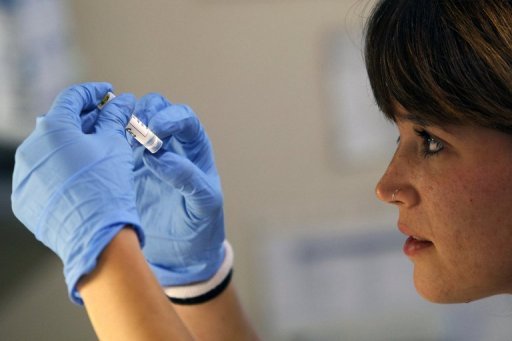
Clouds of tear gas floated above and around Victoriei Square in Bucharest on August 10 as a large anti-government demonstration devolved into clashes between protesters and “jandarmi”, or military police officers.
As tensions escalated in the Romanian capital, pockets of protesters hurled rocks and plastic water bottles at rows of heavily-equipped police.
Ioana Moldovan, a Bucharest-based photographer, followed a group of rally participants to a side street.
Police followed them and the demonstrators ran, but she stayed put.
With a press badge around her neck, she held up her camera to identify herself as a journalist. But as the officers passed her, one sprayed tear gas at her face.
“As I was trying to leave, I just passed them and said, ‘You sprayed gas directly in my eyes’,” she told Al Jazeera by telephone.
“One of them replied, ‘And what did you want? For me to f*** you? You stupid girl, who told you to come here and take pictures?'”
She was one of an estimated 450 people treated on site for injuries sustained during the rally, and she joined around 300 others who lodged official complaints with the general prosecutor’s office.
The event was the latest in a series of demonstrations charging the government, currently led by the left-leaning Social Democrat Party (PSD), with corruption and what critics say are attempts to undermine the judiciary.
The apparent crackdown on demonstrators has drawn criticism from rights groups, prompting authorities to launch an investigation into the incidents that took place nearly two weeks ago.
Moldovan, who says it was her first time to be ostensibly targeted during a rally, added: “It was obvious that they didn’t like me being there and taking pictures.”
PSD leader Liviu Dragnea, who was in June sentenced to three and a half years in jail over a fake jobs scandal, has denounced the latest protests.
Late on Tuesday, he told the Antena 3 channel: “I saw an attempted coup to overthrow the government.”
Platform Romania 100, an NGO in Bucharest, has joined 16 other civil society groups in filing a complaint that alleges abusive behaviour by police during the protests, including disproportionate force and threats.
In a press release, the group said police had “violated the constitutional principles of freedom of assembly and freedom of speech.”
‘Right to protest’
On Monday, the dispute deepened when a 62-year-old man who was reportedly treated for a nosebleed during the clashes was pronounced dead in a hospital in southern Romania.
A day earlier, he had checked himself into the hospital and was treated for internal bleeding.
The hospital director called for a probe into the causes of his demise, while local media speculated whether there was a link between his death and the tear gas.
Late on Tuesday, local media reported that Raed Arafat, head of the Department for Emergency Situations, said he did not see a link, adding that an autopsy will provide more information.
Carmen Dan, the interior minister, apologised on Sunday to the police officers and demonstrators who were injured. She claimed that 1,000 people attacked police with stones and bottles.
Neither the interior ministry nor military police replied to Al Jazeera’s request for additional comment.
Days after the protest, military prosecutors launched an investigation into allegations of excessive force.
“For the moment, we have requested documents on how the mission was organised,” Ionel Corbu, the military prosecutor leading the probe, told reporters at the time. “We will also call gendarmes (military police officers) to the hearings.”
Lydia Gall, a Balkans and Eastern Europe researcher at Human Rights Watch (HRW), said investigations into the August 10 events must be “effective” and “impartial”.
“It’s quite clear there were elements of excessive force,” she told Al Jazeera, pointing to “the fact that hundreds of protesters ended up with various degrees of injuries”.
“It’s a basic right to be able to protest,” Gall added.
More protests expected
The rallies kicked off in January 2017, when Romanians took to the streets to protest against the newly-inaugurated government’s plans to decriminalise certain corruption offences and make abuse of power punishable by prison only if the sums involved exceed $47,500.
By January 22, the number of demonstrators swelled to around 30,000, and they peaked at more than half a million in early February.
Although the justice minister resigned, and the decrees were revoked, demonstrations were held throughout the year and into 2018.
The rallies have gained the backing of President Klaus Iohannis, a member of the National Liberal Party, and many opposition politicians.
After previous protests, the European Union and the United States condemned what they viewed as efforts to stymy anti-corruption measures.
The government has defended its positions, accusing opposition politicians, among them President Iohannis, of attempting to undermine its rule.
PSD leader Dragnea has denounced Iohannis as a coup plotter. With an appeal pending, Dragnea still has yet to go to jail and still heads the ruling party.
The August 10 rally was dubbed “Diaspora at Home” and was attended by Romanians who returned to the country to participate.
Their demands included the resignation of the current governing cabinet.
More protests are expected to take place in September and October.
Elena Calistru of the Funky Citizens advocacy group said the protests follow in a tradition of anti-corruption rallies stretching back to 2013.
Calistru said that although many Romanians are suffering from “protest fatigue”, she expects upcoming rallies to draw broad participation.
“The movement in itself is largest than just protests,” she told Al Jazeera. “They are about more than the gesture of taking to the streets.”












